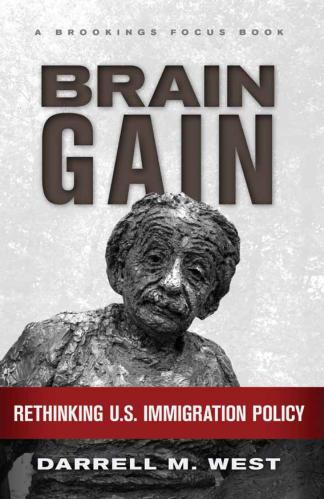Studies in this week’s Hutchins Roundup find that most successful entrepreneurs are middle-aged, the framing of income-driven student loan repayment schemes influences students’ choice, and more.
Want to receive the Hutchins Roundup as an email? Sign up here to get it in your inbox every Thursday.
Most successful entrepreneurs are middle-aged
Using administrative data from the Census Bureau, Pierre Azoulay of MIT, Benjamin Jones of Northwestern and co-authors find that successful entrepreneurs are commonly middle-aged, challenging a widely held belief that young entrepreneurs are more likely to succeed. Founders of the fastest growing firms—the ones in the top 0.1 percent—were 45 years old on average when they started their businesses, the authors find. A firm started by a 50-year-old is nearly twice as likely grow quickly as one started by a 30-year-old. Azoulay and his co-authors argue that the experience, wealth, and social connections accumulated by middle-aged entrepreneurs gives them an advantage over their younger counterparts. For example, entrepreneurs are twice as likely to be successful if they have at least three years of prior experience in a relevant industry, they find.
Framing of income-driven student loan repayment schemes influences students’ choices
Income-driven repayment schemes link student loan repayment payments to borrowers’ earnings, and are designed, in essence, to insure graduates against unaffordable loan payments and default if their future earnings are low. Even though such plans can reduce the hardship of paying back loans, take-up rates are low. Katharine G. Abraham of the University of Maryland and co-authors use survey responses from 4,399 University of Maryland undergraduates to show that framing matters when students choose between a standard loan repayment and income-driven plans. Students were more likely to prefer an income-driven scheme to a standard fixed monthly payment when the insurance aspect was highlighted, and less likely to prefer an income-driven scheme when survey questions focused on higher total payments and longer repayment periods under such plans. Since comparisons between income-driven schemes and standard schemes often focus on costs, the authors argue that framing explains why income-driven schemes aren’t widely used even though they offer benefits to students with low post-graduation income expectations.
Stabilizing prices often conflicts with addressing credit market conditions
Woon Gyu Choi of the International Monetary Fund and David Cook of Hong Kong University of Science and Technology examine the ways in which inflation-targeting central banks respond when confronted with credit-driven bubbles, particularly at moments when inflation is close to target. They find that central banks in both advanced and emerging-market economies respond to unusual credit conditions, but those in emerging markets are more sensitive to inflation and tend to respond to credit growth only when doing so is consistent with achieving their inflation target. Central banks tighten macroprudential policy as a complement to higher interest rates to temper inflationary pressures or to respond to rapid credit growth; they also use macroprudential tools to check credit expansions when inflation is below target, especially when inflation has been low for an extended period. Macroprudential easing, they find, is more likely when economic conditions are poor, and has less of a link to credit cycles.
Chart of the week: Growing interest payments and rising spending on Social Security, Medicare and other benefits will drive government spending over the next decade

Quote of the week:
“The federal government, by anybody’s measure, is on an unsustainable path in terms of deficits and debt accumulation over the next 30-40 years. This is not a secret… It’s gotten a little bit worse as fiscal stimulus comes in and makes the deficit go somewhat bigger for the next five to 10 years. But the underlying problem was there already. And so the concerns that I have are not so much some kind of crisis… I’m not worried about markets reacting to this. It’s more about how do we make sure that we have solutions for Medicare, Social Security, and other government programs, and get us somehow back on a sustainable path,” says John C. Williams, president of the Federal Reserve Bank of San Francisco.
“I am an optimist. I grew up in California. You can’t help but feel that there are solutions. It seems like we do wait until the last minute to find these solutions… What’s interesting at this point in time is this is a strong U.S. economy… This is an economy that’s doing really well. And yet, even in that situation, we’re basically looking at growing deficits relative to the economy.”
The Brookings Institution is committed to quality, independence, and impact.
We are supported by a diverse array of funders. In line with our values and policies, each Brookings publication represents the sole views of its author(s).









Commentary
Hutchins Roundup: Middle-aged entrepreneurs, income-driven student loans, and more
April 12, 2018